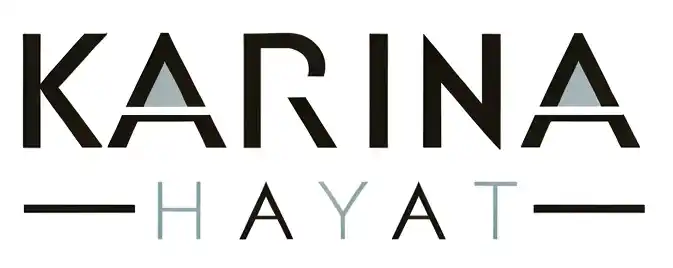Measuring Your Organization’s IQ: Key Metrics and Tools

Innovation is the most critical component of any technology focussed organization. Leading corporations like Microsoft, Google, and Apple excel due to their strong focus on innovation. Change is integral to their operations, reflected in their unique employee policies, dynamic management teams, and advanced software systems. Similarly, for any company to reach new heights, embracing change is essential. A company’s growth stalls if it fails to evolve its operational methods. The journey to irrelevance starts with stagnant growth, eventually leading to the company being overshadowed. This is where the innovation quotient (IQ) comes into play.
The innovation quotient (IQ) of a company refers to its capacity to effectively introduce beneficial changes across all aspects, from operations to the product. A business with a high IQ is characterized by its ability to develop remarkable products or services, as a result of its deeply ingrained culture of innovation that motivates employees to conceive, explore, and test new ideas. This not only provides the company with a first-mover advantage but also leads to exceptional outcomes for the business.
To accurately assess and enhance your organization’s IQ, you need to delve into specific metrics and employ precise tools. Here’s a comprehensive guide to measuring and improving your organization’s IQ effectively.
Key Metrics for Measuring Organizational IQ
Employee Engagement: Engaged employees are often the source of innovative ideas. Use surveys and feedback tools to measure engagement levels. High engagement typically correlates with a higher IQ, as motivated employees are more likely to contribute creatively.
Idea Generation and Implementation: Measure the number of ideas generated by employees and the percentage of those ideas that are implemented. This not only quantifies creative output but also highlights the efficiency of your idea evaluation and implementation processes.
R&D Investment: The amount invested in Research and Development is a direct indicator of an organization’s commitment to innovation. Studies indicate that for every dollar allocated to R&D, nearly two dollars are earned in return. Therefore, tracking R&D expenditure as a percentage of total revenue can provide insights into how much emphasis is placed on developing new technologies and solutions. Applying for grants to support R&D initiatives further enhances innovation capabilities.
Innovation Rate: This metric assesses the percentage of revenue generated from new products or services launched within a specific timeframe. A higher innovation rate indicates a thriving culture of innovation. Regularly monitoring this rate helps you understand how effectively new ideas are being translated into marketable products.
Time to Market: The time it takes to develop an idea into a product and launch it in the market is crucial. A shorter time to market indicates an agile and responsive innovation process, which is essential for maintaining competitive advantage.
Customer Satisfaction: Innovative organizations are customer-centric. Collecting and analyzing customer feedback can help measure how new products or services are perceived and their impact on customer satisfaction. High satisfaction scores reflect successful innovation.
Tools to Enhance and Measure Organizational IQ
Innovation Management Software: Tools like IdeaScale can help in streamlining the process of collecting, evaluating, and implementing ideas. These platforms facilitate collaboration across departments, ensuring that innovative ideas are captured and nurtured.
Employee Engagement Platforms: Platforms such as Workleap or TINYpulse provide insights into employee engagement levels through regular surveys and feedback. These tools help identify areas where engagement can be improved, indirectly boosting innovation. Integrating these platforms into your CRM centralizes feedback, enhancing efficiency and alignment in improving employee engagement across the organization.
Customer Feedback Systems: Utilizing tools like SurveyMonkey or Qualtrics enables you to gather and analyze customer feedback efficiently. This feedback is vital for understanding the impact of your innovations and guiding future developments.
Building a Culture of Innovation
While metrics and tools are essential, encouraging a culture that encourages innovation is equally important. HR plays a pivotal role in this by shaping policies and practices that support creativity and risk-taking.
Encourage Continuous Learning: Invest in training and development programs that keep employees updated with the latest industry trends and technologies. A well-informed workforce is more likely to generate innovative ideas.
Recognize and Reward Innovation: Implement recognition programs that celebrate innovative contributions. Whether through monetary rewards, public acknowledgment, or career advancement opportunities, recognizing efforts fosters a culture where innovation is valued.
Promote Collaboration: Create opportunities for cross-functional collaboration. Innovation often arises from diverse perspectives, so encourage teams from different departments to work together on projects.
Support Risk-Taking: Cultivate an environment where taking calculated risks is encouraged. Understand that not all innovative ideas will succeed, but each failure provides valuable learning experiences.
Conclusion
Measuring your organization’s IQ involves a combination of key metrics and effective tools that provide a comprehensive view of your innovation capabilities. By regularly tracking these metrics and using the right tools, you can foster a culture of innovation that drives continuous growth and success. The HR role in nurturing this culture is critical, as it lays the foundation for an environment where creativity and innovation thrive. By focusing on these aspects, your organization can stay ahead in a competitive landscape, ensuring long-term success and sustainability.
About the author
Karina Hayat is an entrepreneur, philanthropist, and mentor to young entrepreneurs. Alongside her husband Zeeshan Hayat, she co-founded and led initiatives focused on driving digital transformation and innovation. In addition to her entrepreneurial endeavours, Karina Hayat is an active philanthropist, supporting social causes through initiatives like 100 Meals a Week. As a mentor and advocate for female entrepreneurship and empowerment, she exemplifies resilience and the profound impact of giving back.
